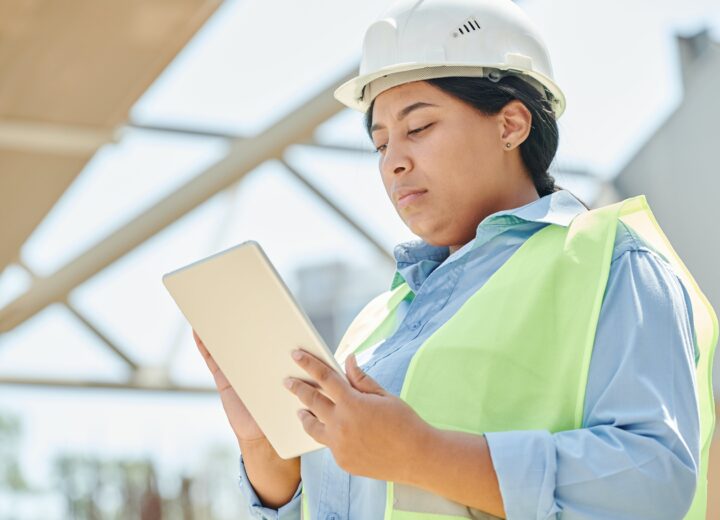Based on the idea of the various industrial revolutions we have experienced, Industry 4.0 is the next step. At the heart of this revolution? The integration of intelligent products. What is it and what can it bring to the building industry?
What is Industry 4.0?
An industrial revolution based on intelligent products
Industry 4.0 is present today! Before that, we’ve seen three industrial revolutions.

- The first was characterised by steam power and machines, dramatically transforming production processes (Industry 1.0).
- The second was marked by a boom in mass production, assembly lines and electric power (Industry 2.0).
- The last one introduced automation, computers, and electronics to industry (Industry 3.0).
We are now in Industry 4.0, the fourth industrial revolution. Cyber-physical systems, IoT, cloud technology, artificial intelligence… This revolution represents digital transformation, allowing us to further optimise processes and enhance decision-making.
What does it mean for buildings?
In Europe, 20% of the energy consumed by citizens is used by heating and cooling systems and by hot water production1.
The New European directives require the building sector to reduce its energy intensity. In order to fall in line with the Net Zero Scenario, we should lower our energy intensity 5 times faster within the next 10 years than during the 10 preceding years. This means that energy consumption per square metre must be at least 35% lower in 2030 than in 20212.
The building industry can achieve these goals through intelligent products, connectivity and AI. How can Industry 4.0 help to make systems more sustainable? Read on to find out.
Easier commissioning maintenance and operation
More transparent maintenance
Previously, when working with large units, you couldn’t see what was going on in them. If an issue arose that required to be addressed, a maintenance company was called in. They had to find the problem and fix it. Which they could only do if they had the right component at the right time. When you need to call someone for support, an IoT solution can take 1 hour phone calls to 5 minutes.
Today, new technologies can be added to connect to existing devices to make maintenance easier. For example, you can view and control your product remotely via a portal. You can check the system, set up alerts and analyse what is happening. Problems can even be solved remotely, for example water refills, and you can do on-site troubleshooting remotely. This saves service visits up to 75%3, and ensures a first time fix when you do need to go on site.
Commissioning remotely
|
Get data in real-time
Connected sensors and metres make it possible to collect real-time data on building performance, such as energy consumption, air quality, temperature, lighting, etc. This data can be used to optimise maintenance, manage resources and make informed decisions or bill tenants for their energy and water consumption – automatically without checking the active metre. For that, it’s good to have a dedicated platform to share data with your service departments.
In addition, alerts can be automated – notifying an operator by email or SMS, allowing them to respond in real time.
Greater sustainability
Using more IoT devices means making products smarter. This means that fewer resources (physical, human or knowledge) are used, resulting in more sustainable products and 75% fewer product returns4.
Better energy management
Energy management in buildings can be improved with Industry 4.0. It allows you to:
- Monitor and optimise energy consumption in real time.
- Automate energy management systems.
- Use data analytics to improve energy performance.
- Invoice tenants for the energy usage
These technologies can help you identify areas that are not working and what needs to be optimised. They will also help stakeholders meet the European Green Deal requirements to reduce energy consumption by 40%.
Identify trends
AI can help identify patterns, trends and anomalies using diagnostic data. You can enable proactive and predictive maintenance and improve energy efficiency in building management through machine learning algorithms.
Example: review of past and recurring alerts, history review
Industry 4.0 means improved user experience. From remote equipment control to mobile applications for building management, to real-time monitoring dashboards and more. Digital solutions available will help you with installation and maintenance, with greater cost efficiency.
Aalberts hydronic flow control is committed to promoting this industry and helping its clients to benefit from it. To this end, it has developed Flamconnect Remote, a tool that allows you to remotely control an entire building.
1 Source: European Commission, Energy performance of buildings directive
2 Source: IEA, Tracking report – Buildings
3 Source: Why Support is Key for IoT Success | Cygnus’s James Grogan
4 Source: Why Support is Key for IoT Success | Cygnus’s James Grogan





